A fun twist on a traditional sugar cookie, these brown sugar cookies have a deliciously rich and deep flavor thanks to the brown sugar. They come together in a few simple steps and only use eight ingredients. You will not be able to eat just one.
Thanks to the molasses in the brown sugar, these cookies have more moisture than if you used white sugar, making them delightfully soft and tender. They are perfect for any occasion, from a party to a potluck, or just as an afternoon snack. If you want another easy cookie recipe, then try my peanut butter chocolate chip cookies, cornflake cookies, or kitchen sink cookies.
What You Need to Make This Recipe
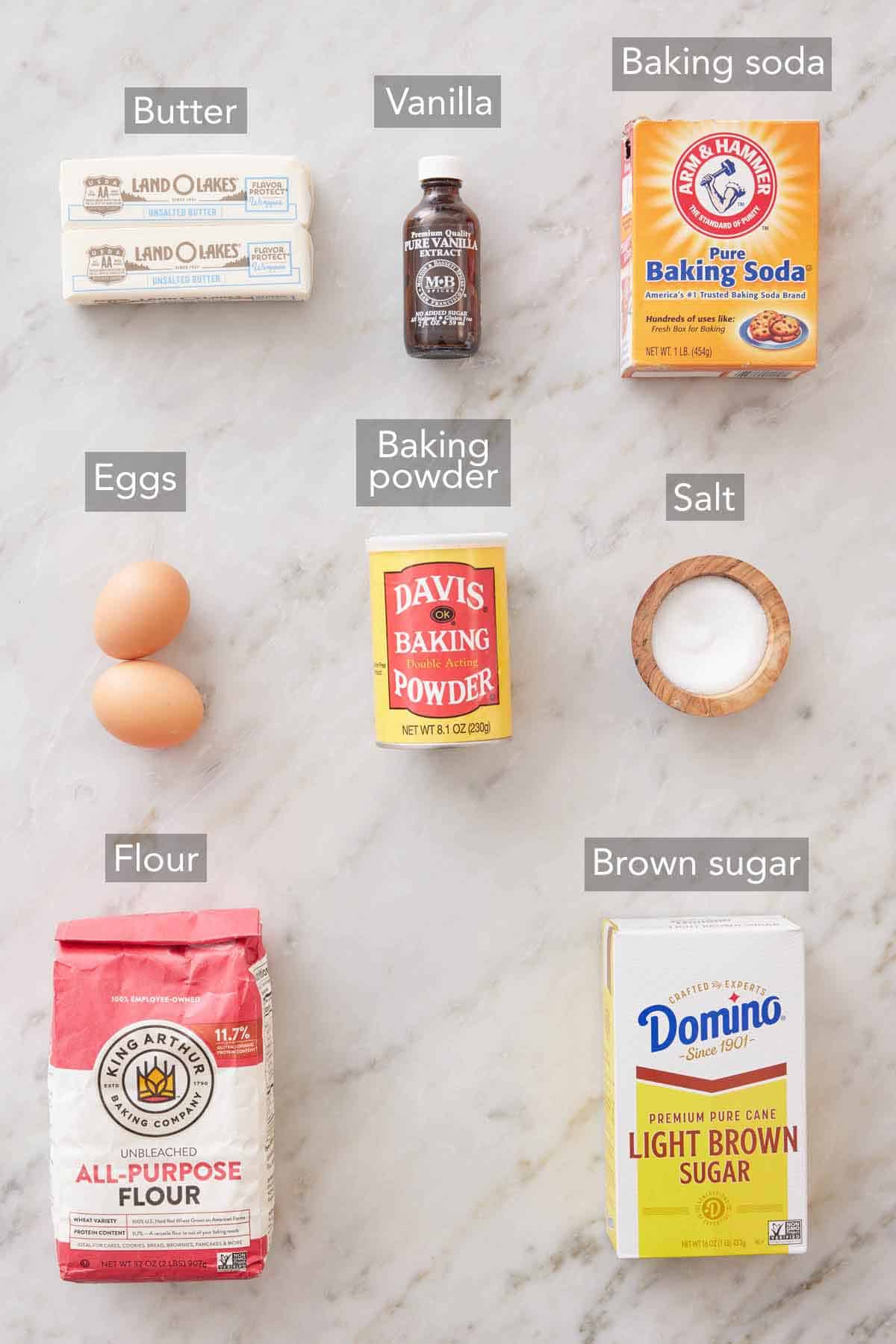
Leavening agents — to keep the cookies from being dense, I use both baking soda and baking powder to help lift the cookies.
Flour — all-purpose flour is ideal for these cookies as it has the perfect amount of protein. Using bread flour can result in too tough and dense cookies, while cake flour makes the cookies too delicate and crumbly.
Butter — be sure to buy unsalted butter, not salted butter, or your cookies might be overly salty. Also, butter should be at room temperature, which means it’s soft enough so that when you press into it, your finger leaves a dent. It’ll be challenging to cream the butter if it’s cold.
Brown sugar — the moisture in the brown sugar provides the cookies with a soft and chewy texture. If you swap the brown sugar for white sugar, your cookies will be crispy instead of tender. Follow my guide on how to make brown sugar if you only have white sugar on hand.
How to Make Brown Sugar Cookies
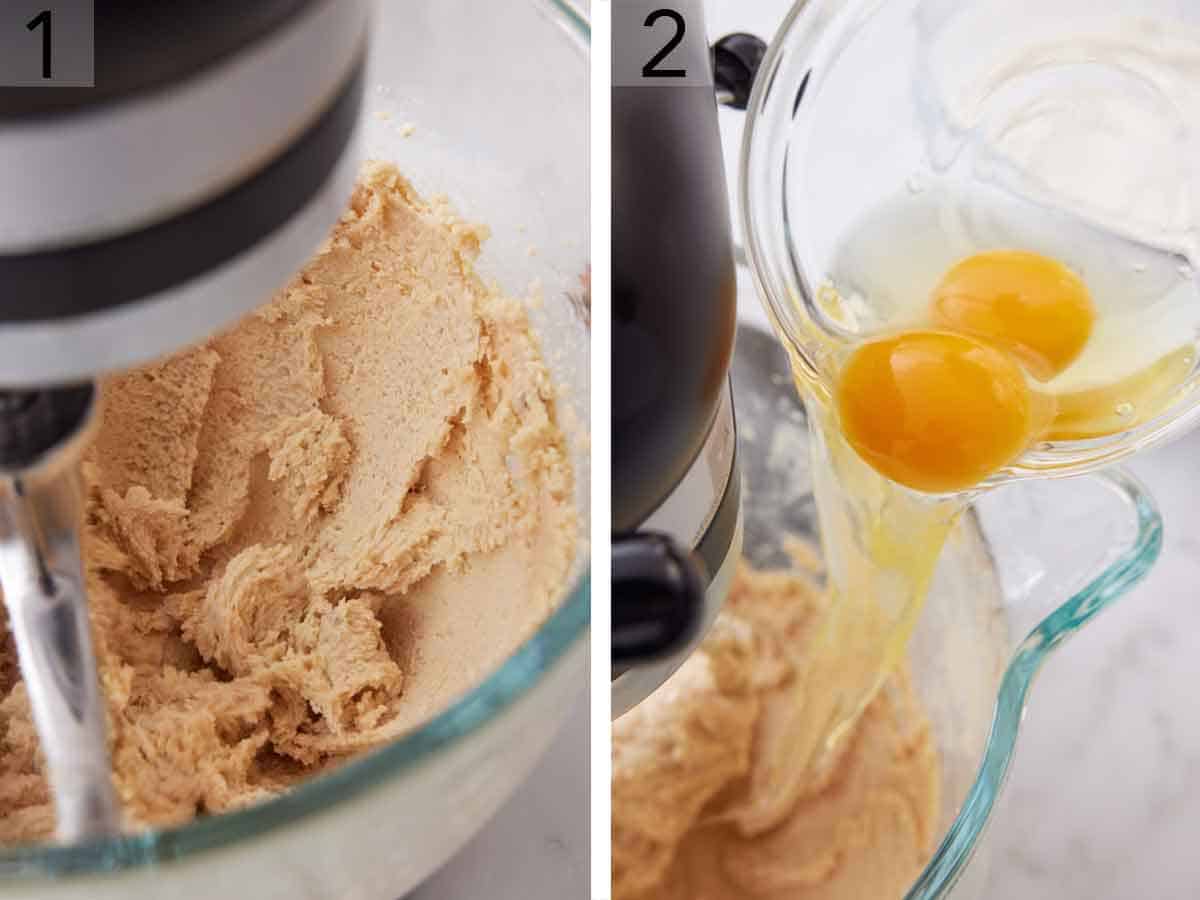
1. In a large mixing bowl or the bowl of a stand mixer fitted with the paddle attachment, beat the butter and sugar together on medium speed until light and fluffy.
2. Add the egg and vanilla, beating until well combined, stopping to scrape down the bowl as needed.
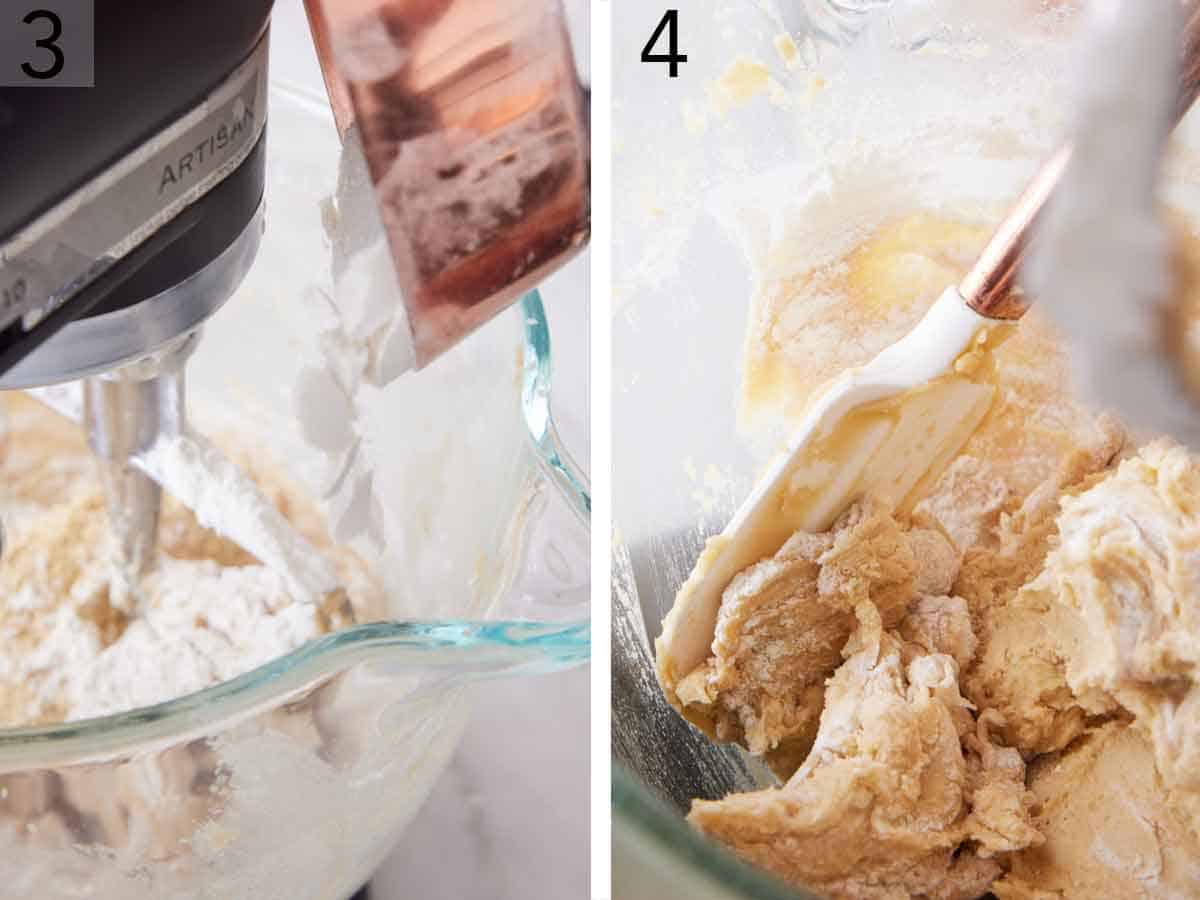
3. Combine the flour, baking soda, baking powder, and salt, and with the mixer on low speed, add in the flour mixture
4. Beat until combined, stopping to scrape down the bowl at least once.
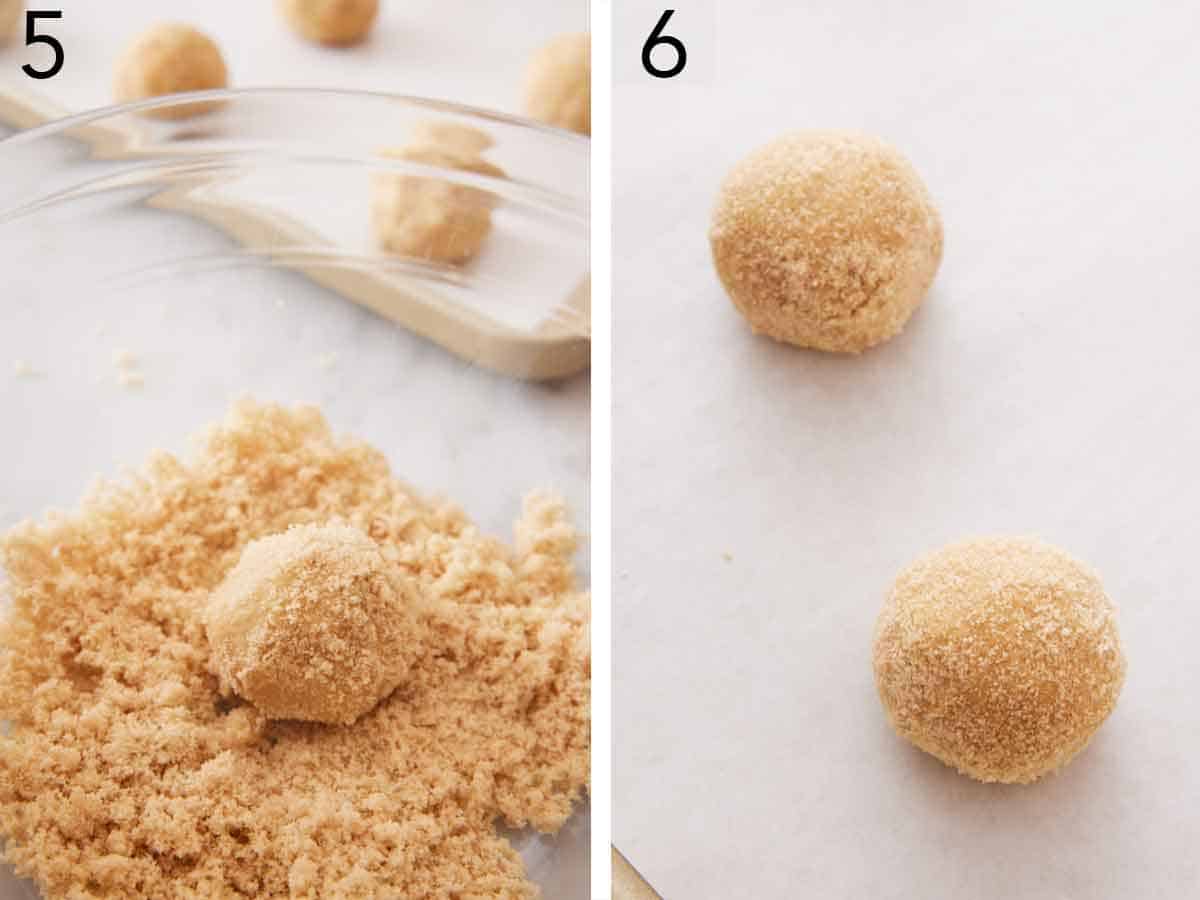
5. Scoop the dough into small balls and roll the balls in additional brown sugar or decorating sugar, if desired. Chill the cookie dough balls for 1 hour.
6. Place cookies 2 inches apart on parchment-lined baking sheets and bake, one sheet at a time, for 12 minutes or until just starting to turn brown on the edges and then the center doesn’t appear pale. Let cool for a few minutes on the pan then transfer to a wire rack to cool completely.
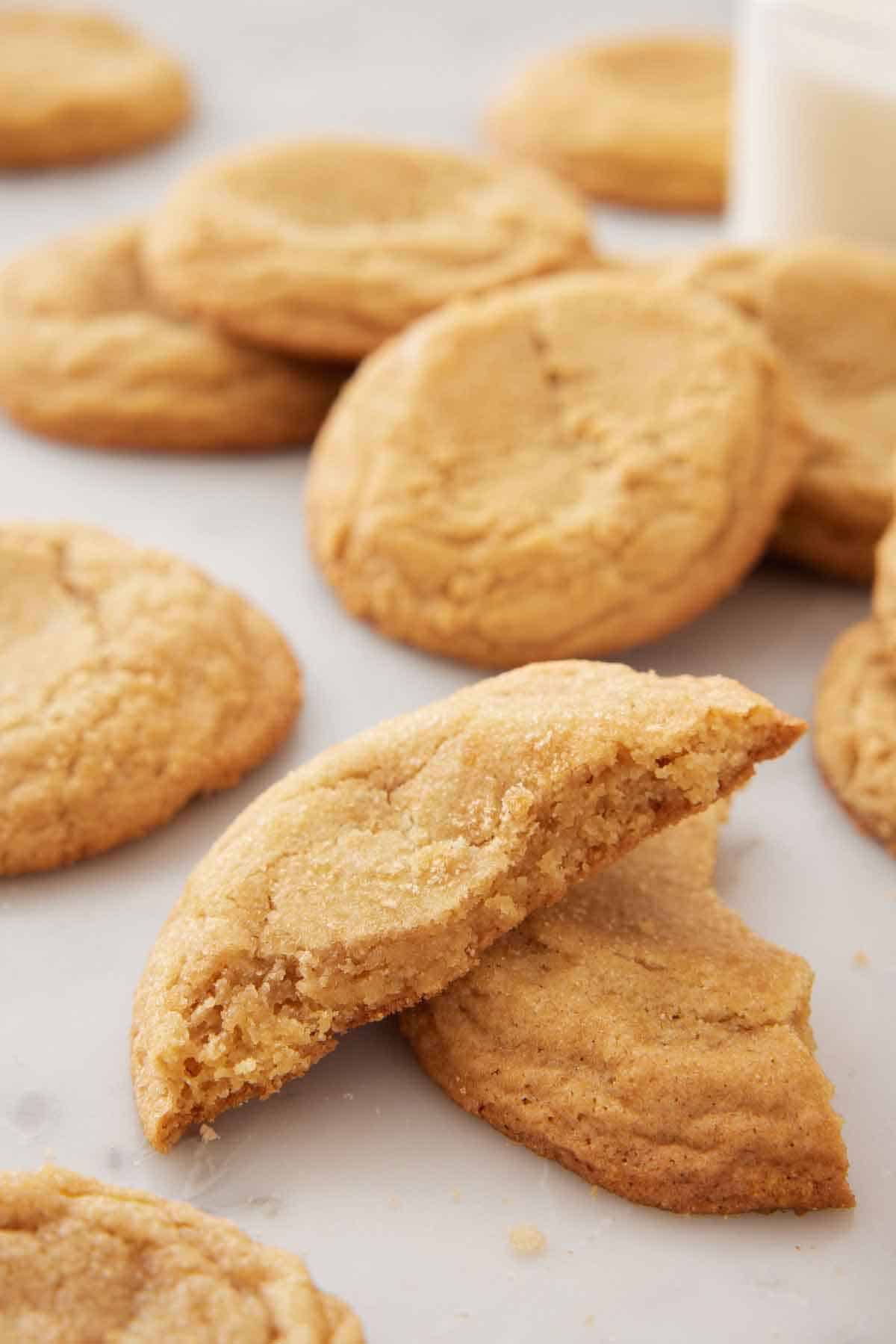
Pro Tips for Making This Recipe
- It’s best to use room temperature eggs so they mix easily into your cookie dough. If your eggs are cold, place them in a bowl of warm water for a few minutes. This method will help to quickly bring them to room temperature if you have forgotten to take them out of your fridge beforehand.
- Just like the eggs, butter should be room temperature as well. To soften butter, simply set it out on your kitchen counter for about 1 to 2 hours. However, the amount of time required depends on the temperature of your kitchen. If you’re short on time, cut the butter into cubes and set them out, as they will come to room temperature faster than a block.
- I highly recommend using a triggered cookie scoop to portion the cookie dough. A cookie scoop ensures that all the cookies are the same size and bake evenly.
- To avoid dry or dense cookies, measuring your flour accurately is important. The most common mistake is adding too much flour to the batter. The easiest and most precise way to measure flour is by using a digital kitchen scale. If you don’t have one, fluff the flour with a spoon, sprinkle it into your measuring cup, and use a knife to level it off. It’s important to avoid packing the flour into the measuring cup.
- Don’t rush creaming butter and sugar together until light and fluffy. Creaming the butter and sugar helps incorporate air into the dough, which will help naturally leaven your cookies and create a tender crumb. If you don’t cream the butter and sugar enough, your cookies may be dense.
- Don’t skip chilling the cookie dough! Refrigerating the dough prevents the cookies from overspreading when they bake.
- Careful not to overbake these brown sugar cookies, as they’ll continue to firm up as they cool and become dry and crumbly if they’re already firm when you take them out of the oven.

Frequently Asked Questions
The dough can be prepared and refrigerated for up to 3 days. Just make sure the dough is covered so it doesn’t take on any scents from the fridge. Bake the cookie dough balls as instructed when ready to enjoy.
You don’t have to roll your cookie dough balls in sugar, but it adds an extra bit of sweetness to them and gives them a bit of a crunch.
These cookies will stay fresh in an airtight container at room temperature for 1 week.
You can freeze the cookie dough balls in a freezer-safe bag or container for up to 1 month. Bake from frozen as directed, increasing the bake time by 2 to 3 minutes. I recommend flash freezing them on a lined sheet pan first, and then you can place them in a bag without them sticking together.
If you’ve tried this Brown Sugar Cookies recipe, then don’t forget to rate the recipe and let me know how you got on in the comments below, I love hearing from you!

Brown Sugar Cookies
Equipment
- Mixing Bowls
- Electric hand or stand mixer
- Baking Sheets
- Parchment paper
- Cookie scoop
Ingredients
- 3 cups all-purpose flour (360g)
- ¾ teaspoon baking soda
- ¼ teaspoon baking powder
- 1 teaspoon salt
- 1 cup unsalted butter softened (227g)
- 1¾ cups packed light brown sugar (385g)
- 2 large eggs
- 2 teaspoons vanilla extract
Instructions
- In a medium mixing bowl, whisk together the flour, baking soda, baking powder, and salt.
- In a large mixing bowl or the bowl of a stand mixer fitted with the paddle attachment, beat the butter and sugar together on medium speed until light and fluffy, about 3 minutes. Add the egg and vanilla, beating until well combined, stopping to scrape down the bowl as needed.
- With the mixer on low speed, add in the flour mixture and beat until combined, stopping to scrape down the bowl at least once. Scoop the dough into small balls (about 2 tablespoons). If desired, roll the balls in additional brown sugar or decorating sugar. Chill the cookie dough balls for 1 hour.
- Preheat the oven to 350F. Line two large baking sheets with parchment paper.
- Place cookies 2 inches apart on the baking sheets and bake, one sheet at a time, for 12 minutes or until just starting to turn brown on the edges and then the center doesn’t appear pale. Let cool for a few minutes on the pan then transfer to a wire rack to cool completely. Store in an airtight container for up to 1 week.
Notes
- It’s best to use room temperature eggs so they mix easily into your cookie dough. If your eggs are cold, place them in a bowl of warm water for a few minutes. This method will help to quickly bring them to room temperature if you have forgotten to take them out of your fridge beforehand.
- Just like the eggs, butter should be room temperature as well. To soften butter, simply set it out on your kitchen counter for about 1 to 2 hours. However, the amount of time required depends on the temperature of your kitchen. If you’re short on time, cut the butter into cubes and set them out, as they will come to room temperature faster than a block.
- I highly recommend using a triggered cookie scoop to portion the cookie dough. A cookie scoop ensures that all the cookies are the same size and bake evenly.
- To avoid dry or dense cookies, measuring your flour accurately is important. The most common mistake is adding too much flour to the batter. The easiest and most precise way to measure flour is by using a digital kitchen scale. If you don’t have one, fluff the flour with a spoon, sprinkle it into your measuring cup, and use a knife to level it off. It’s important to avoid packing the flour into the measuring cup.
- Don’t rush creaming butter and sugar together until light and fluffy. Creaming the butter and sugar helps incorporate air into the dough, which will help naturally leaven your cookies and create a tender crumb. If you don’t cream the butter and sugar enough, your cookies may be dense.
- Don’t skip chilling the cookie dough! Refrigerating the dough prevents the cookies from overspreading when they bake.
- Careful not to overbake these brown sugar cookies, as they’ll continue to firm up as they cool and become dry and crumbly if they’re already firm when you take them out of the oven.














